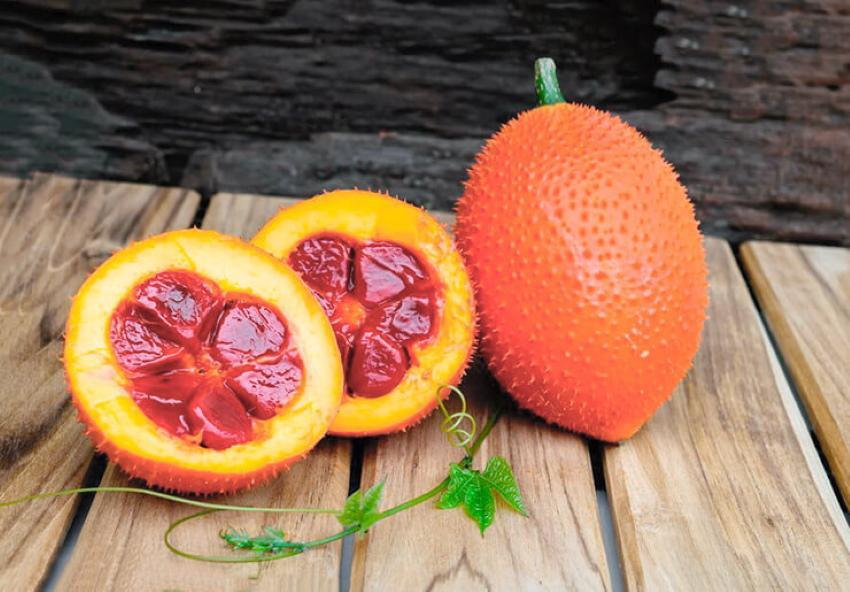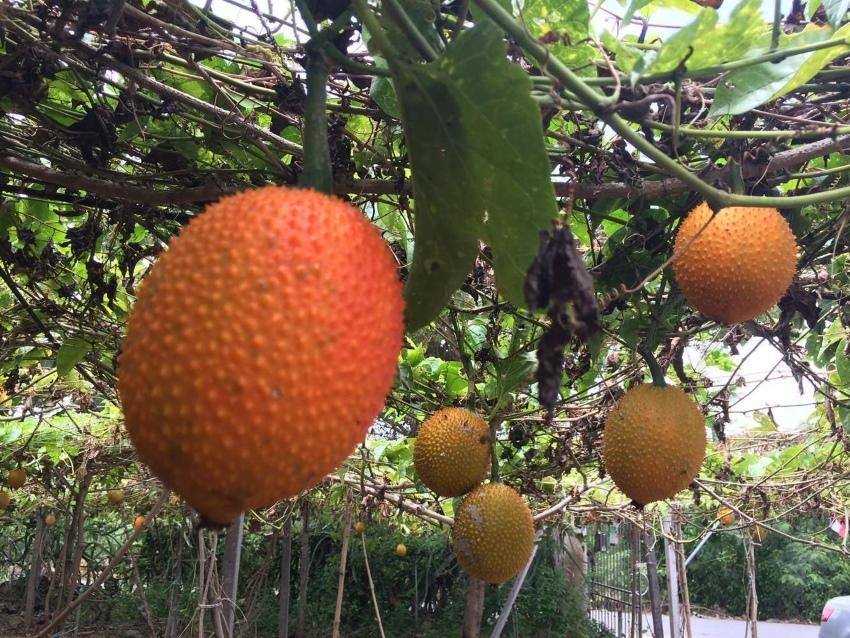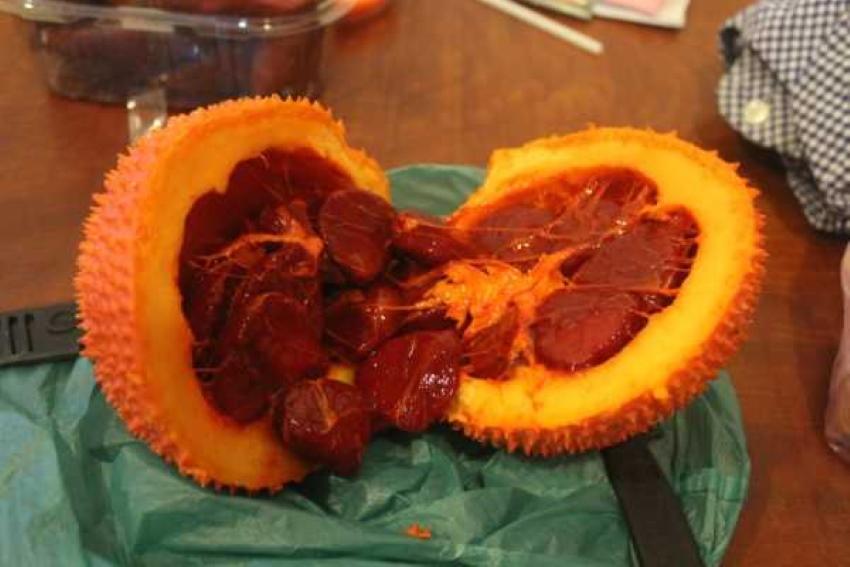Momordika kokhikhinskaya - how is exotic and what it is
 Do you know what is the advantage of the residents of the southern strip? Thanks to the warm climate, they have an excellent opportunity to grow a variety of exotic fruits and vegetables. For example, to get acquainted with such a thermophilic liana, like momordika kokhihinskaya, which most people do not even imagine. Outwardly, its ripe fruits look like large and elongated orange oranges, covered with dense short thorns. But inside, instead of orange juicy pulp with slices, there are large red grains. And here's the most interesting thing: the fruits we are used to become the sweeter the more ripe they are. In Momordika, the opposite is true: as it matures, it becomes more and more bitter.
Do you know what is the advantage of the residents of the southern strip? Thanks to the warm climate, they have an excellent opportunity to grow a variety of exotic fruits and vegetables. For example, to get acquainted with such a thermophilic liana, like momordika kokhihinskaya, which most people do not even imagine. Outwardly, its ripe fruits look like large and elongated orange oranges, covered with dense short thorns. But inside, instead of orange juicy pulp with slices, there are large red grains. And here's the most interesting thing: the fruits we are used to become the sweeter the more ripe they are. In Momordika, the opposite is true: as it matures, it becomes more and more bitter.
What is a plant and its fruits

The plant sets two types of flowers. Larger, male, sit on long peduncles and bloom first. Their cups are blackish. Female flowers are yellow, smaller and bloom second on short peduncles. During flowering, the inflorescences spread a pleasant and sweet aroma around the bush, like garden jasmine.
The fruits are slightly elongated, at first green, with a thick, rough skin covered with short thorns and pimples. The weight of one such ball can reach 1.5 kg, and the diameter is 20 cm. As it ripens, the skin turns orange-red. The inside of an unripe fruit is juicy, light green flesh that turns red when ripe. The pulp contains flat, fragrant seeds.
The most delicious momordica is unripe, then you can clearly feel the coconut taste with a pleasant sourness in it. When fully ripe, the fruit becomes bitter. They should be soaked before use.
Momordika kokhikhinskaya - how to eat an exotic fruit
 All parts of the plant are useful and edible:
All parts of the plant are useful and edible:
- The young leafy part is crumbled into vegetable salads and added to soups.
- Used for salads and inflorescences.
- The pulp can be eaten simply as a fruit, raw. It is also added to salads, sauces, vegetable, fish and meat dishes. Momordica can be salted, pickled and canned, made desserts and preserves from it.
- The fried and crushed seeds produce an original seasoning for baked goods and soup. And they can also be fried as a whole, breaded in sour cream or eggs.
It is recommended to pick the fruits at the semi-ripeness stage, 2 weeks before full ripening. The skin must be removed from them - it is inedible.